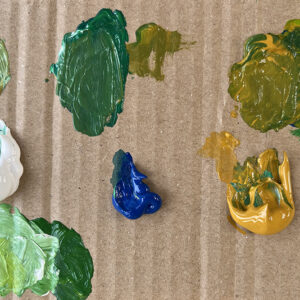Talking Points: Colour Theory
A collection of sources and imagery to explore terms used in colour theory.
Please note that this page contains links to external websites and has videos from external websites embedded. At the time of creating, AccessArt checked all links to ensure content is appropriate for teachers to access. However external websites and videos are updated and that is beyond our control.
Please let us know if you find a 404 link, or if you feel content is no longer appropriate.
We strongly recommend as part of good teaching practice that teachers watch all videos and visit all websites before sharing with a class. On occasion there may be elements of a video you would prefer not to show to your class and it is the teacher’s responsibility to ensure content is appropriate. Many thanks.
*If you are having issues viewing videos it may be due to your schools firewall or your cookie selection. Please check with your IT department.*
This resource is free to access and is not a part of AccessArt membership.





Colour Theory
Colour theory can be overwhelming to understand and teach.
AccessArt would encourage an intuitive approach to teaching colour through resources such as Expressive Painting and Colour Mixing, however the information below will help you understand some of the terminology used in colour theory.
Primary Colours
Primary colours are any of a group of colours from which all other colours can be achieved by mixing. Red, yellow and blue can’t be recreated through colour mixing and act as the building blocks for all other colours.

Secondary Colours
Secondary colours are achieved when the primary colours are mixed together in equal parts. On the colour wheel, secondary colours are located between primary colours.
-
Red and blue: Purple
-
Red and yellow: Orange
-
Yellow and Blue: Green

Tertiary Colours
Tertiary colours can be achieved by mixing primary and secondary colours. Blue-green, blue-violet, red-orange, red-violet, yellow-orange and yellow-green are colour combinations you can make from colour mixing. On a colour wheel, tertiary colours are between primary and secondary colours. – Adobe




